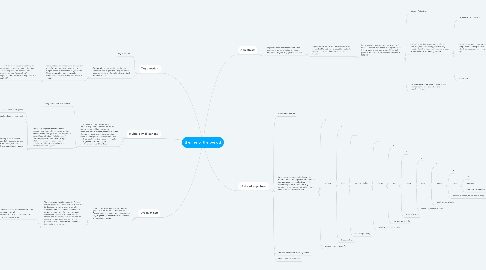
1. Tag question:
1.1. Tag questions
1.2. Tag questions (or question tags) turn a statement into a question. They are often used for checking information that we think we know is true.
1.2.1. Tag questions are made using an auxiliary verb (for example: be or have) and a subject pronoun (for example: I, you, she). Negative question tags are usually contracted: It's warm today, isn't it (not 'is it not')
1.2.1.1. Usually if the main clause is positive, the question tag is negative, and if the main clause is negative, it's positive. For example: It's cold (positive), isn't it (negative)? And: It isn't cold (negative), is it (positive)?
1.2.1.1.1. If the main clause has an auxiliary verb in it, you use the same verb in the tag question. If there is no auxiliary verb (in the present simple and past simple) use do / does / did (just like when you make a normal question).
2. Multiple intelligences:
2.1. Intelligence is often defined as our intellectual potential; something we are born with, something that can be measured, and a capacity that is difficult to change. In recent years, however, other views of intelligence have emerged. One such conception is the theory of multiple intelligences proposed by Harvard psychologist Howard Gardner.
2.1.1. Theory of Multiple Intelligences
2.1.2. This theory suggests that traditional psychometric views of intelligence are too limited. where he suggested that all people have different kinds of "intelligences." Gardner proposed that there are eight intelligences, and has suggested the possible addition of a ninth known as "existentialist intelligence."
2.1.2.1. Visual-Spatial Intelligence
2.1.2.2. Strengths: Visual and spatial judgment
2.1.2.3. People who are strong in visual-spatial intelligence are good at visualizing things. These individuals are often good with directions as well as maps, charts, videos, and pictures
2.1.2.3.1. Linguistic-Verbal Intelligence
2.1.2.3.2. Strengths: Words, language, and writing
2.1.2.3.3. People who are strong in linguistic-verbal intelligence are able to use words well, both when writing and speaking. These individuals are typically very good at writing stories, memorizing information, and reading
3. Urban tribes:
3.1. Urban tribes are young city people that gather in relatively small, fluid groups. These groups share common interests that are, in general, different from the interests of mainstream culture
3.1.1. The term was originally coined by French sociologist Michel Maffesoli back in the ’80s to describe the new phenomenon of a subculture, and since then has become a part of everyday life. Some people claim they’re dead, while others think they’re striving and will never go away. Whichever the case, Urban Tribes are still part of popular culture – it only takes one look at the media to realise this.
3.1.1.1. In the world there are many urban tribes, these are some of these:Bears,Chaps,Furries,Ganguro Girls,Mermaids,Otakus.
3.1.1.1.1. o
4. Adjectives:
4.1. Adjectives are words that describe the qualities or states of being of nouns: enormous, doglike, silly, yellow, fun, fast.
4.1.1. adjectives are words that modify (describe) nouns.EX:Margot wore a beautiful hat to the pie-eating contest. here the adjective is beautiful.
4.1.1.1. But adjectives can do more than just modify nouns. They can also act as a complement to linking verbs or the verb to be. EX:It smells gross in the locker room.here the adjective is GROSS.
4.1.1.1.1. Uses of Adjectives
4.1.1.1.2. Adjectives tell the reader how much—or how many—of something you’re talking about, which thing you want passed to you, or which kind of something you want.
4.1.1.1.3. EX: Please use three white flowers in the arrangement. Three and white are modifying flowers.
5. Order of adjectives:
5.1. Order of adjectives
5.2. When more than one adjective comes before a noun, the adjectives are normally in a particular order. Adjectives which describe opinions or attitudes (e.g. amazing) usually come first, before more neutral, factual ones (e.g. red):
5.2.1. 1
5.2.2. opinion
5.2.2.1. 2
5.2.2.2. size
5.2.2.2.1. 3
5.2.2.2.2. physical quality
5.2.2.2.3. thin, rough, untidy
5.2.2.3. big, small, tall
5.2.3. unusual, lovely, beautiful
